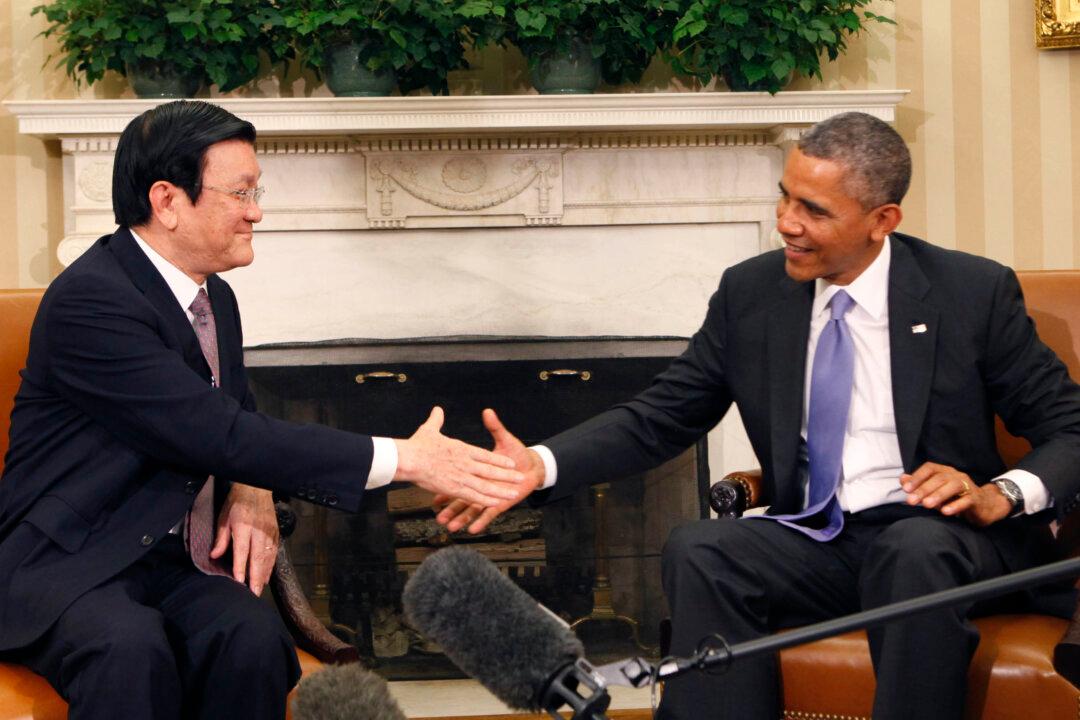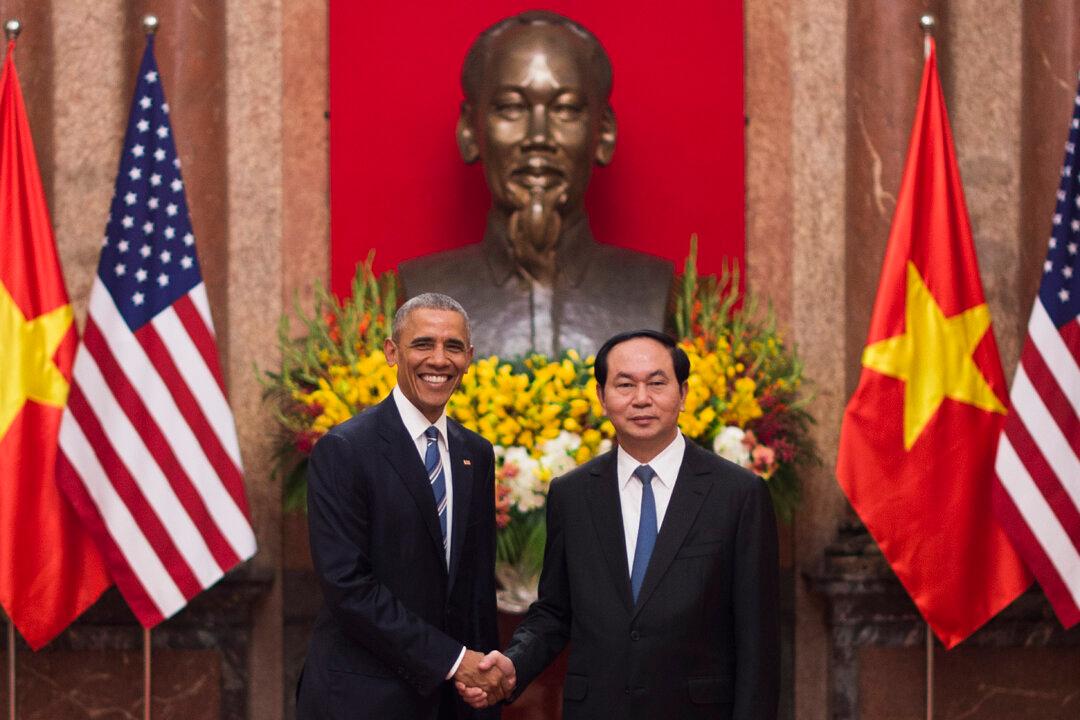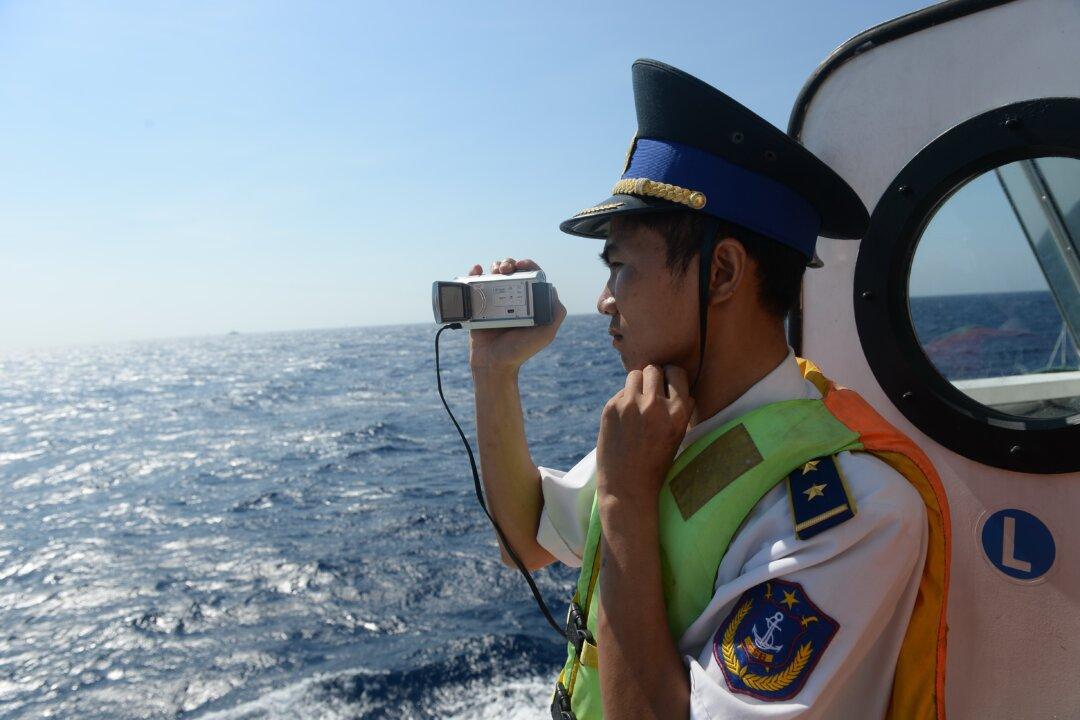As Vietnam and the United States mark the 40th anniversary of the end of their bitter war on April 30, it’s surprising how far the two countries have come in normalizing relations. To be sure, there are still areas where ties could be deepened, particularly in military-to-military interaction. The United States is held back by concerns about human rights, particularly Hanoi’s detention of bloggers, but for Vietnam the worry centers on how giant neighbor China will react.
Vietnam this year seems to have two major priorities in its ties with the United States: Host President Barack Obama in Hanoi and secure a meeting for Communist Party chief Nguyen Phu Trong in the White House. When Washington signaled that Trong would be invited to visit Washington, China sought to preempt the Americans by sending him a last-minute invitation to visit Beijing. While Beijing feted the Vietnamese party chief in early April, Vietnam welcomed US naval ships for an annual exercise off the coastal city of Danang, as if to signal its intention to balance ties between China and the United States.
A key factor driving Vietnam to bolster its relations with the United States in recent years has been China’s increasingly assertive behavior in the disputed South China Sea. Most recently, China has been changing facts on the water by dredging sand and pumping it onto partially submerged coral reefs, transforming them into new manmade islands in the Spratly Islands, parts of which are also claimed by Vietnam, the Philippines and Malaysia. China appears to be creating outposts from which it can conduct air and sea patrols 1,000 miles off its southern shore.


